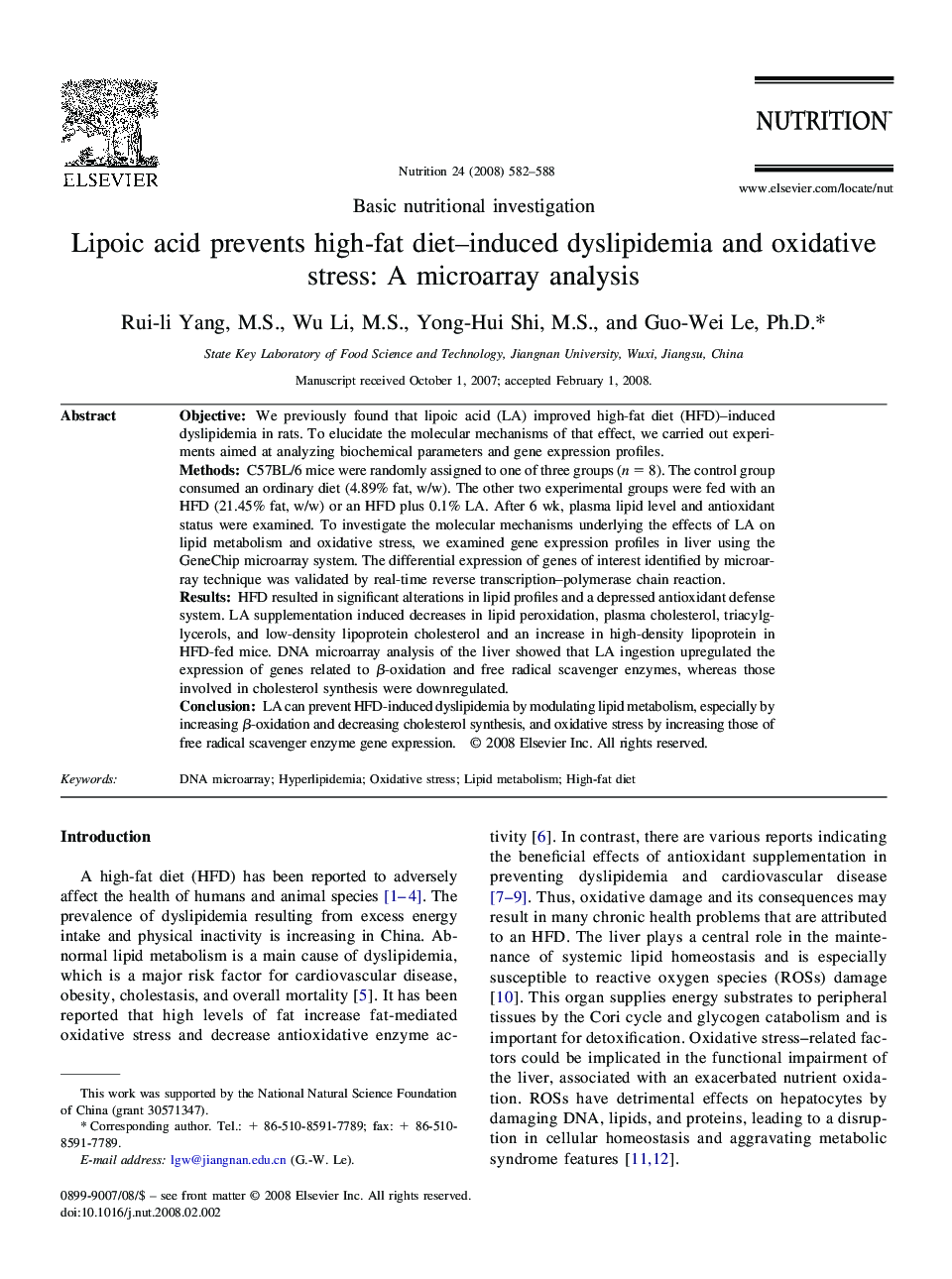| Article ID | Journal | Published Year | Pages | File Type |
|---|---|---|---|---|
| 3277426 | Nutrition | 2008 | 7 Pages |
ObjectiveWe previously found that lipoic acid (LA) improved high-fat diet (HFD)–induced dyslipidemia in rats. To elucidate the molecular mechanisms of that effect, we carried out experiments aimed at analyzing biochemical parameters and gene expression profiles.MethodsC57BL/6 mice were randomly assigned to one of three groups (n = 8). The control group consumed an ordinary diet (4.89% fat, w/w). The other two experimental groups were fed with an HFD (21.45% fat, w/w) or an HFD plus 0.1% LA. After 6 wk, plasma lipid level and antioxidant status were examined. To investigate the molecular mechanisms underlying the effects of LA on lipid metabolism and oxidative stress, we examined gene expression profiles in liver using the GeneChip microarray system. The differential expression of genes of interest identified by microarray technique was validated by real-time reverse transcription–polymerase chain reaction.ResultsHFD resulted in significant alterations in lipid profiles and a depressed antioxidant defense system. LA supplementation induced decreases in lipid peroxidation, plasma cholesterol, triacylglycerols, and low-density lipoprotein cholesterol and an increase in high-density lipoprotein in HFD-fed mice. DNA microarray analysis of the liver showed that LA ingestion upregulated the expression of genes related to β-oxidation and free radical scavenger enzymes, whereas those involved in cholesterol synthesis were downregulated.ConclusionLA can prevent HFD-induced dyslipidemia by modulating lipid metabolism, especially by increasing β-oxidation and decreasing cholesterol synthesis, and oxidative stress by increasing those of free radical scavenger enzyme gene expression.
